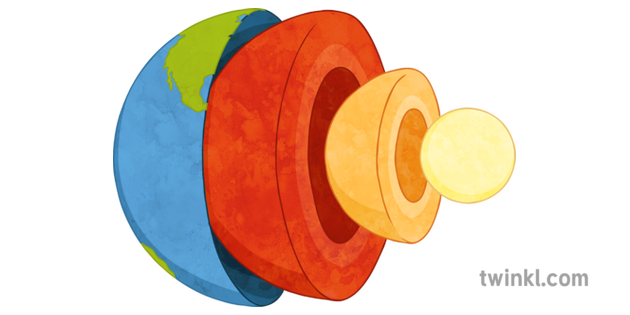What is the term for extremely hot liquid and semi-liquid rock located under Earth's surface.
magma
What is used to record earthquakes?
A seismograph
Which type of plate boundary is this?
Convergent Boundary
Identify the name of each section of Earth's structure.
Crust, Mantle, Outer Core, Inner Core
Who came up with the theory of continental drift?
Alfred Wegener
Volcanoes that that have not erupted in a long time but are expected to erupt again in the future are known as ________.
dormant volcanoes
What scale do we use to measure an earthquake's intensity?
The Richter scale
Which type of plate boundary is this?
Divergent Boundary
In what type of rock are fossils most commonly found?
sedimentary rock
What does plate tectonic theory predict about the distribution of volcanoes and earthquakes?
They should occur primarily along plate boundaries
How are volcanoes formed?
At a convergent plate boundary, one plate dives or subducts beneath the other and magma pushes up through Earth's crust.
What is a tsunami and what causes them to occur?
A series of extremely long waves caused by a large and sudden displacement of the ocean, usually the result of an earthquake below or near the ocean floor.
How do mountains form?
When two or more of Earth's tectonic plates are pushed together, often at regions known as convergent plate boundaries.
Scientists think that convection currents flow beneath Earth's ________.
lithosphere
Describe the theory of Continental Drift
a hypothesis that continents move around Earth's surface and that they were once joined together as a single supercontinent
What type of rock forms when magma cools?
What are most earthquakes caused by?
the movement of shorelines from faulting rock layers on Earth's crust
How do Earth's plates move?
They ride around on the hot convecting mantle, similar to a conveyor belt that carries food at the grocery store.
What is superposition?
younger layers forming on top of older rocks
Provide two examples of evidence that would support Continental Drift
identical rocks of the same type and age found on both sides of the Atlantic Ocean
the shape of different continents fit together
ancient fossils of the same species found in rocks on different continents
grooves and rock deposits on glaciers
How do patterns in earthquake data compare to the patterns in volcanic data in the map below?

Earthquakes and volcanoes overlap in some places, such as along the edges of continents (North and South America).
Some islands have both volcanoes and earthquakes.
Earthquakes are more common than volcanoes and are especially frequent where there are larger numbers of volcanoes.
The point on Earth's surface directly above the focus of an earthquake is called a/an ________.
epicenter
What can you conclude about plate boundaries (the dark lines) by looking at this map?
- Plate boundaries (dark black lines) are associated with areas of high volcanic and seismic activity.
- This is nearly always true in the ocean and is often true on land or on the edges of continents.
- Some land areas have many earthquakes and several volcanoes but do not align with a plate boundary.
- The areas of high elevations are aligned to plate boundaries in some locations and not in others.
How are metamorphic rocks formed?
What was a hole in the theory of Continental Drift?